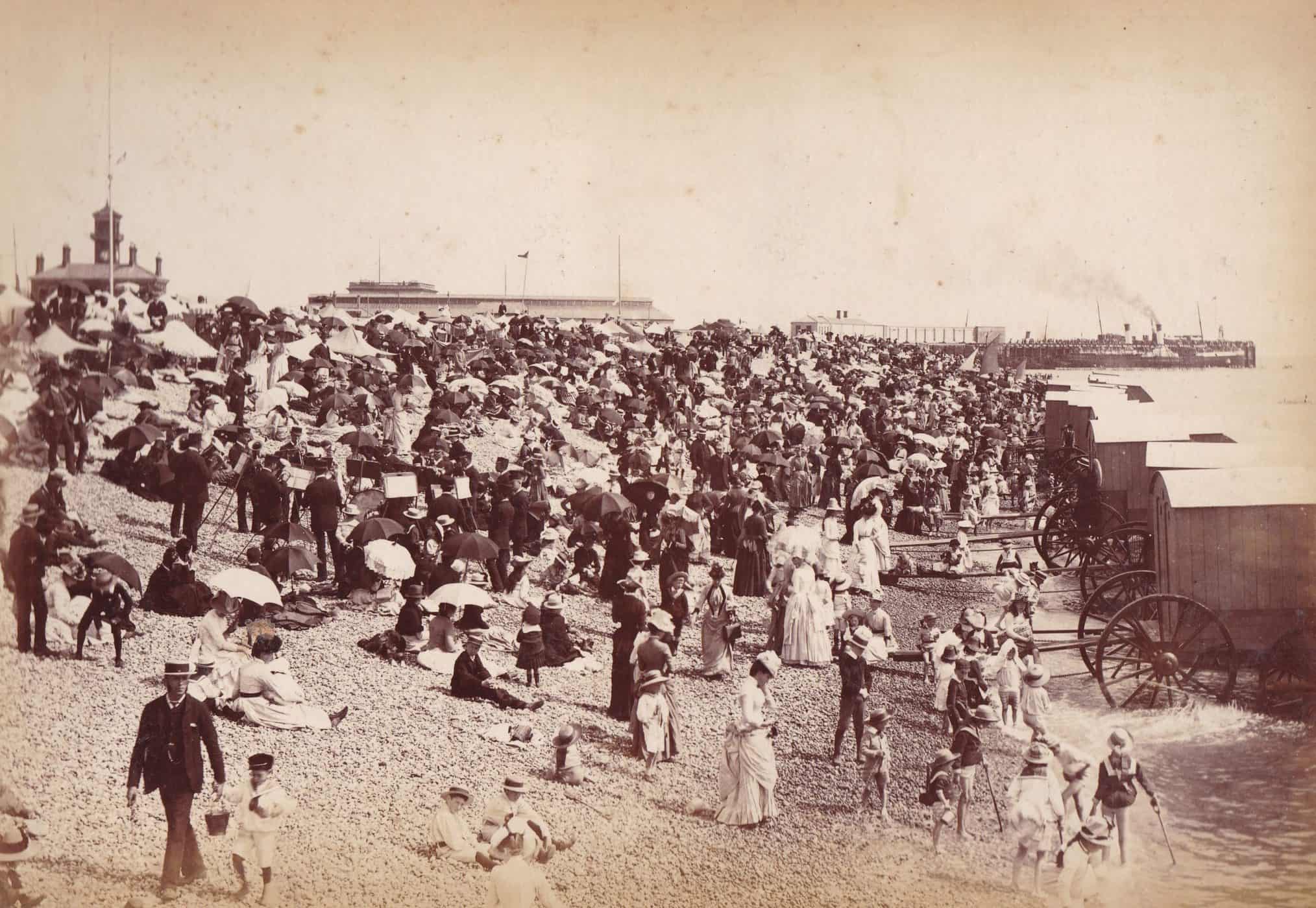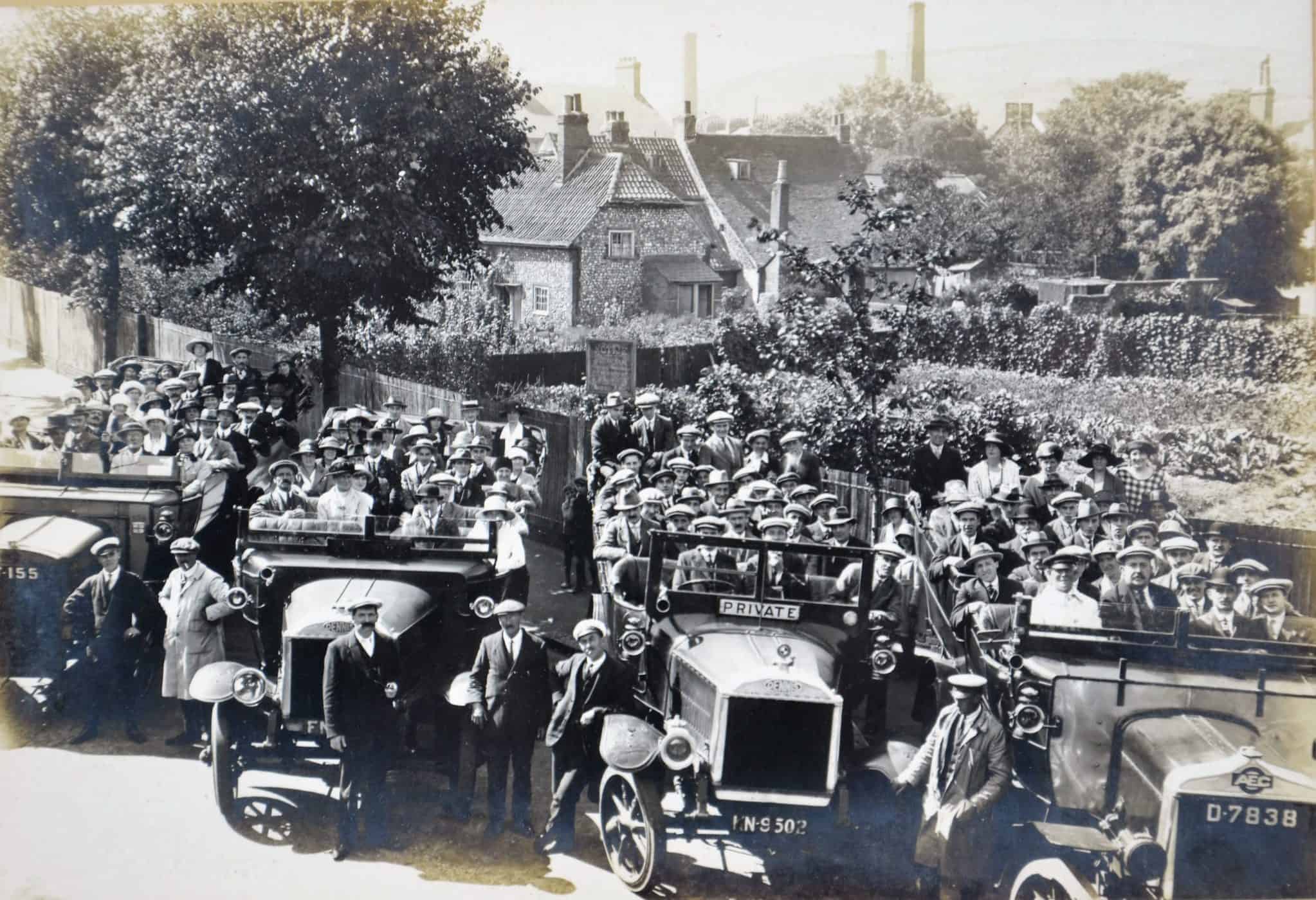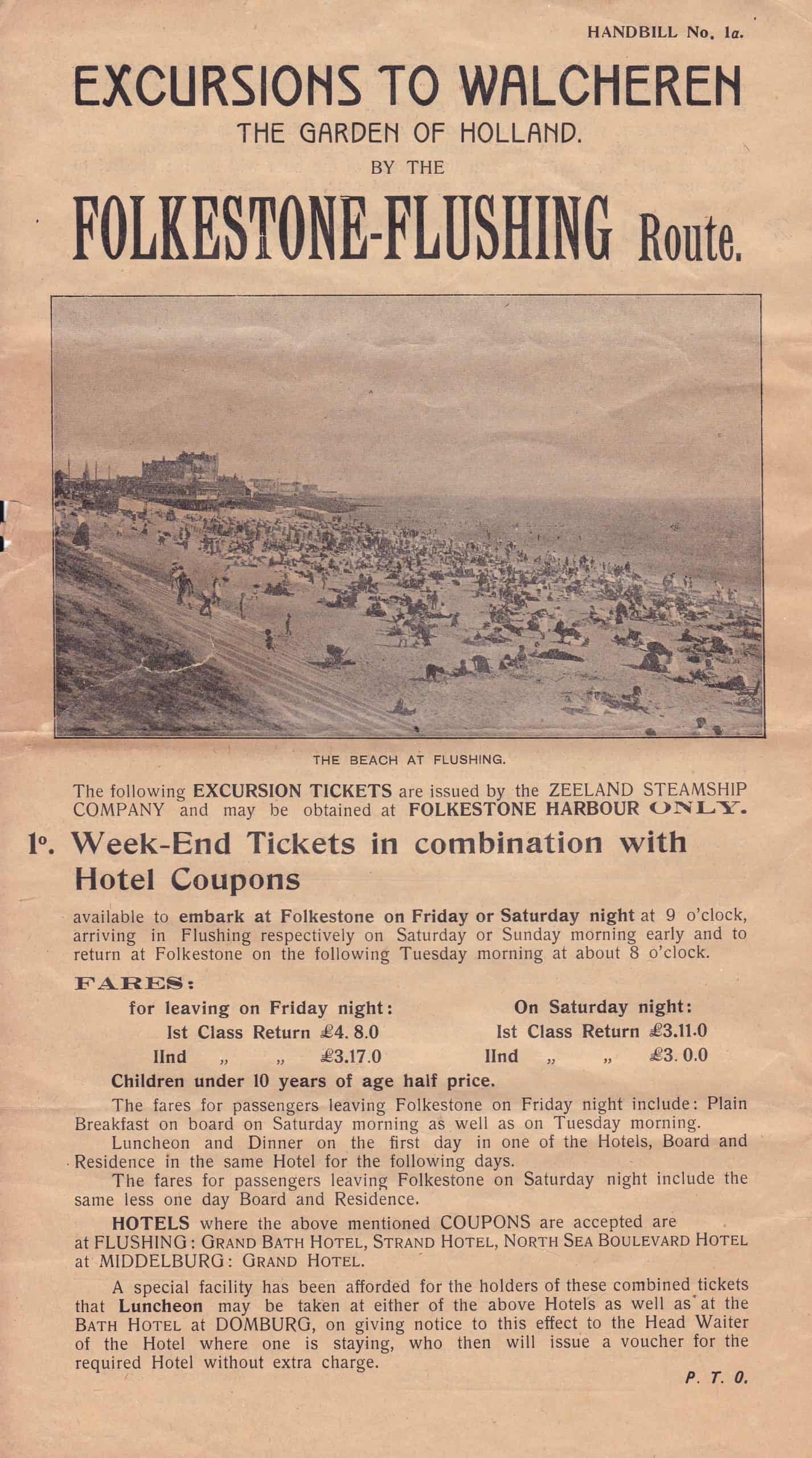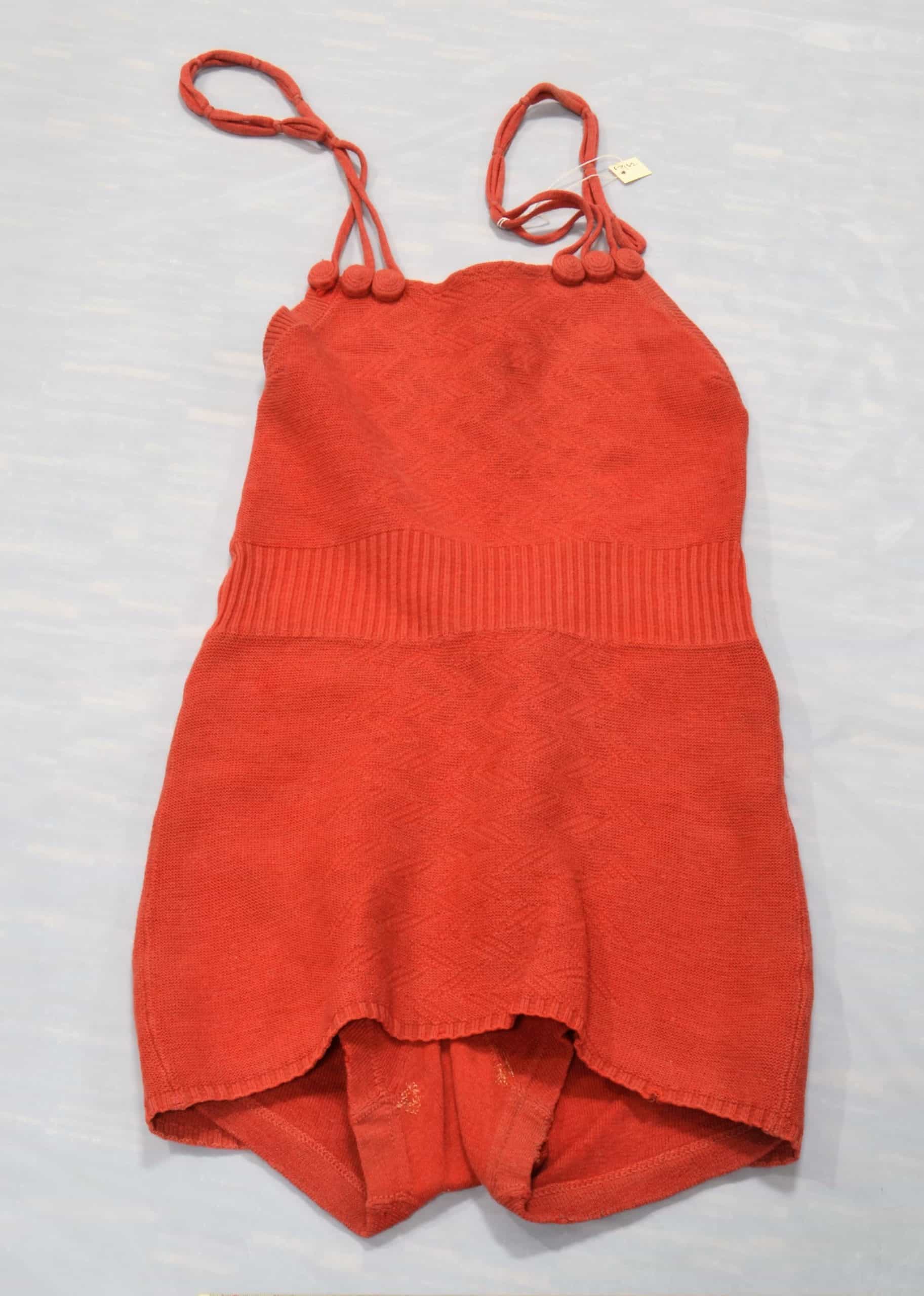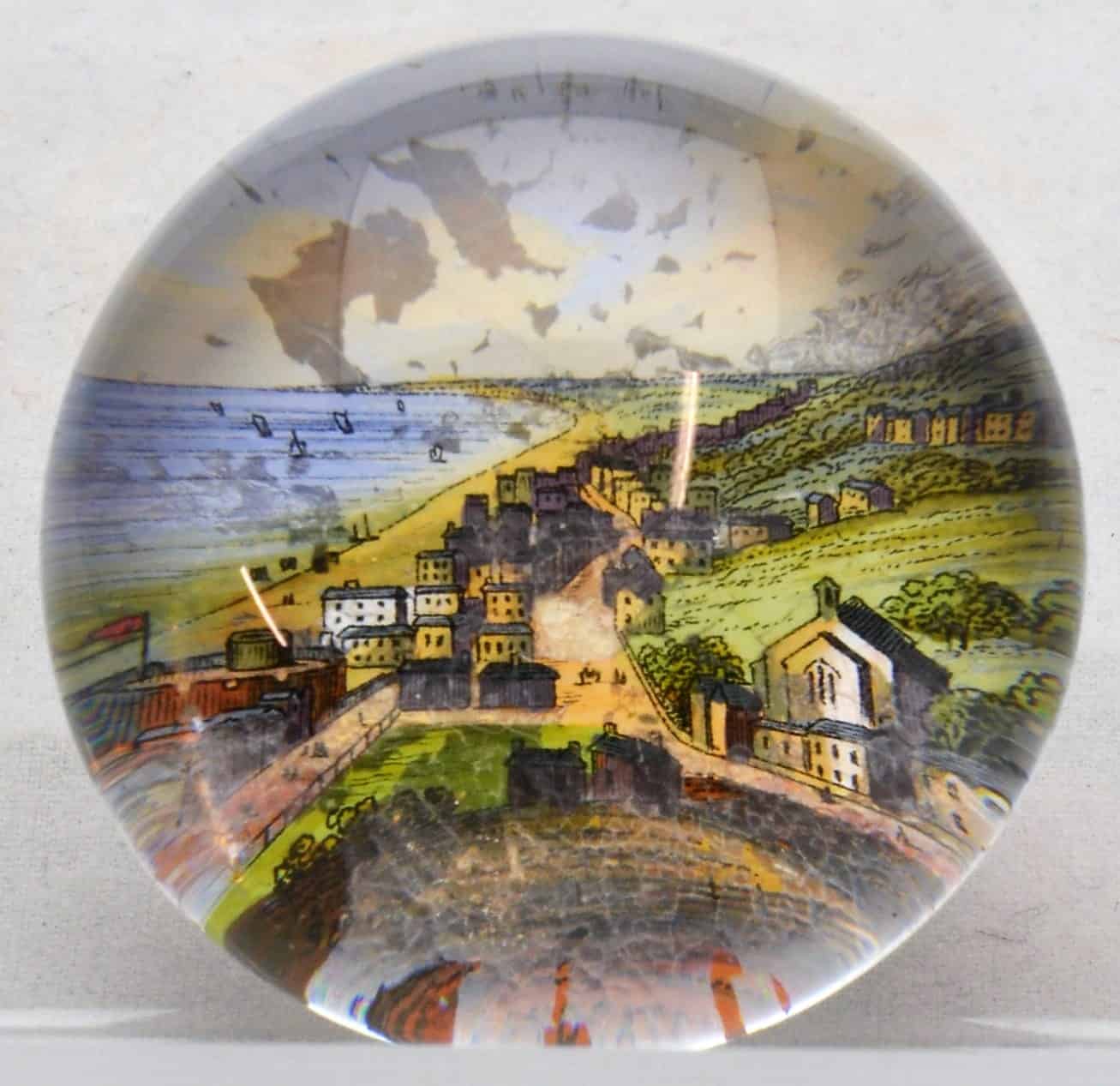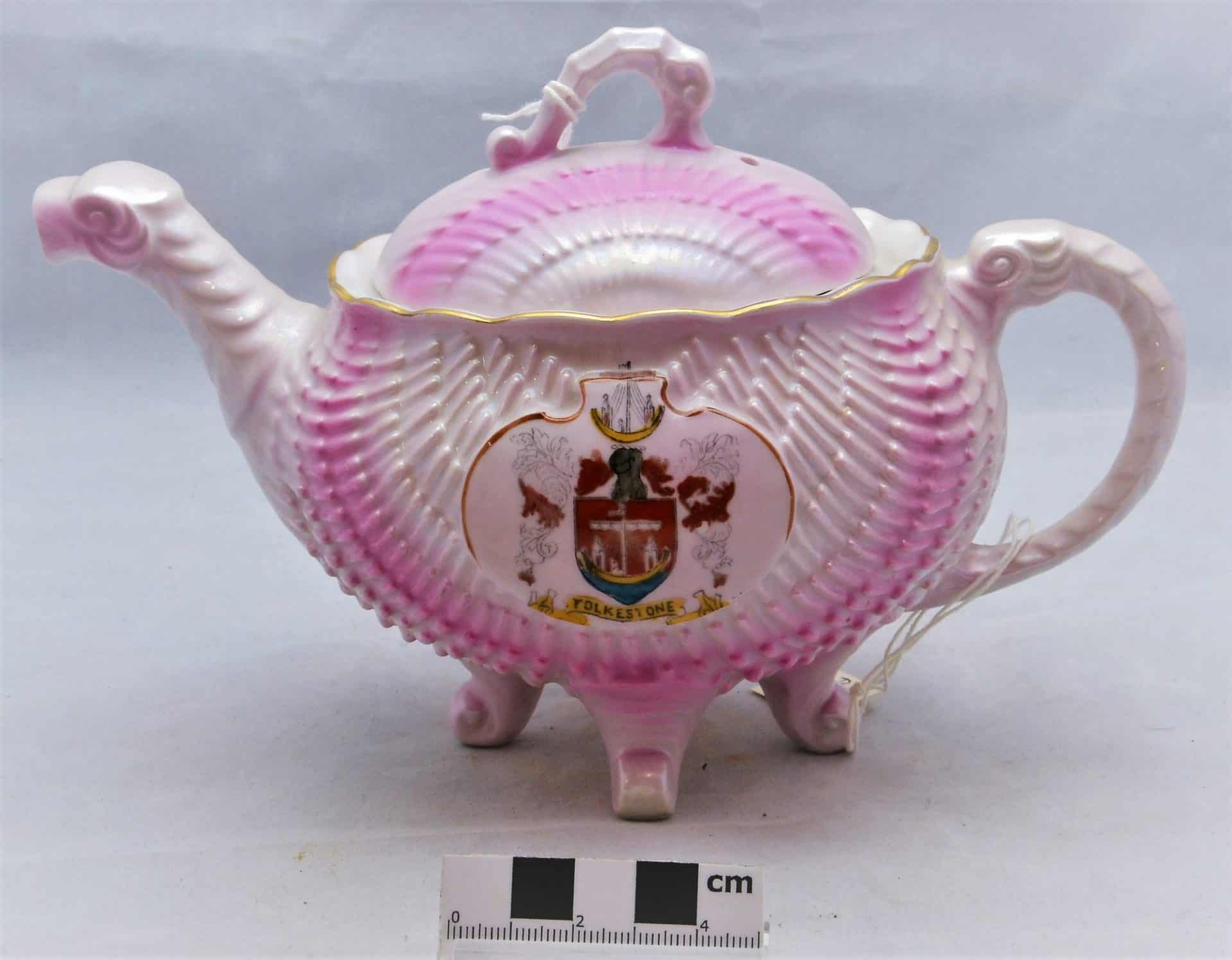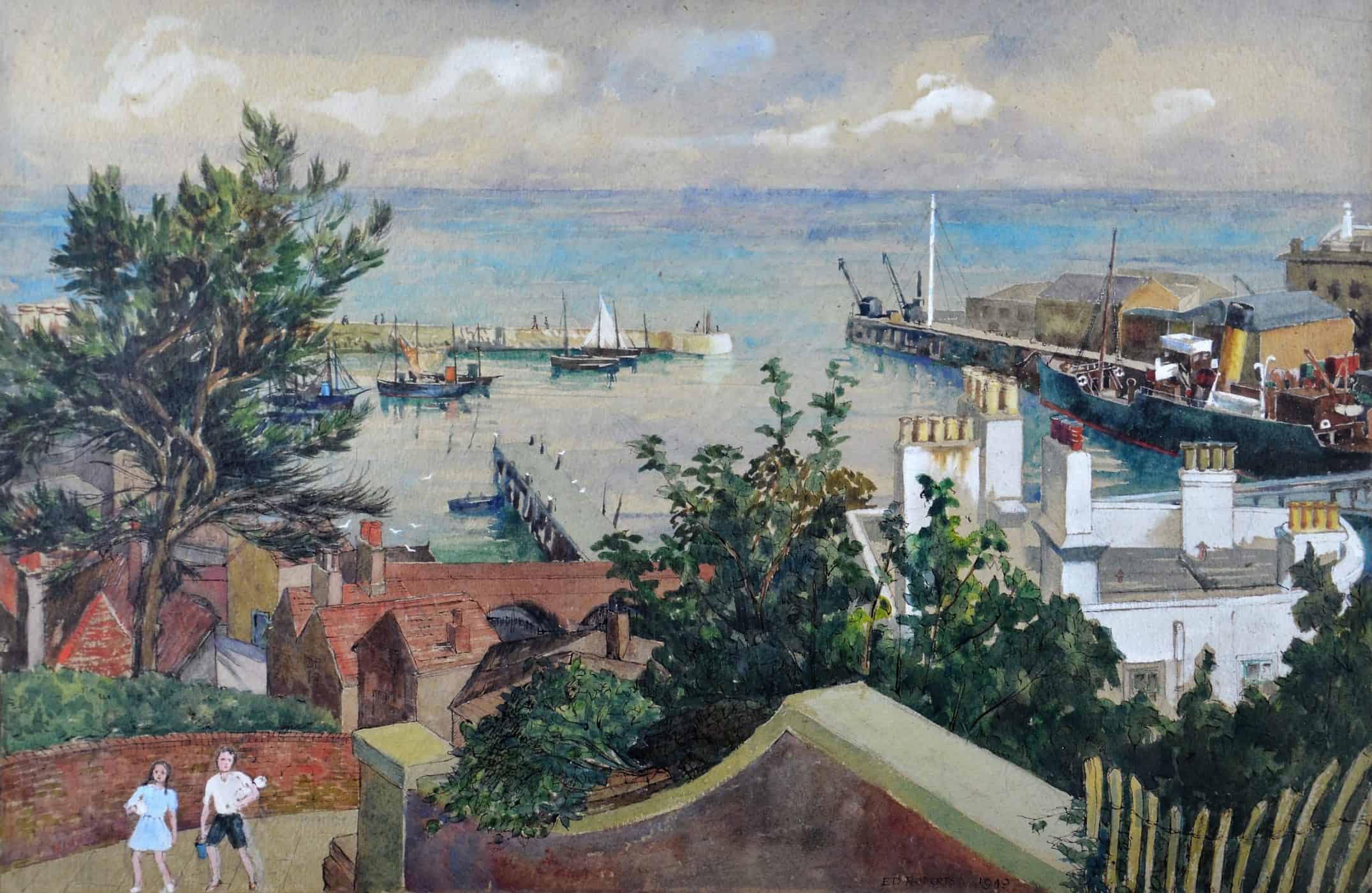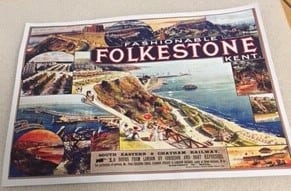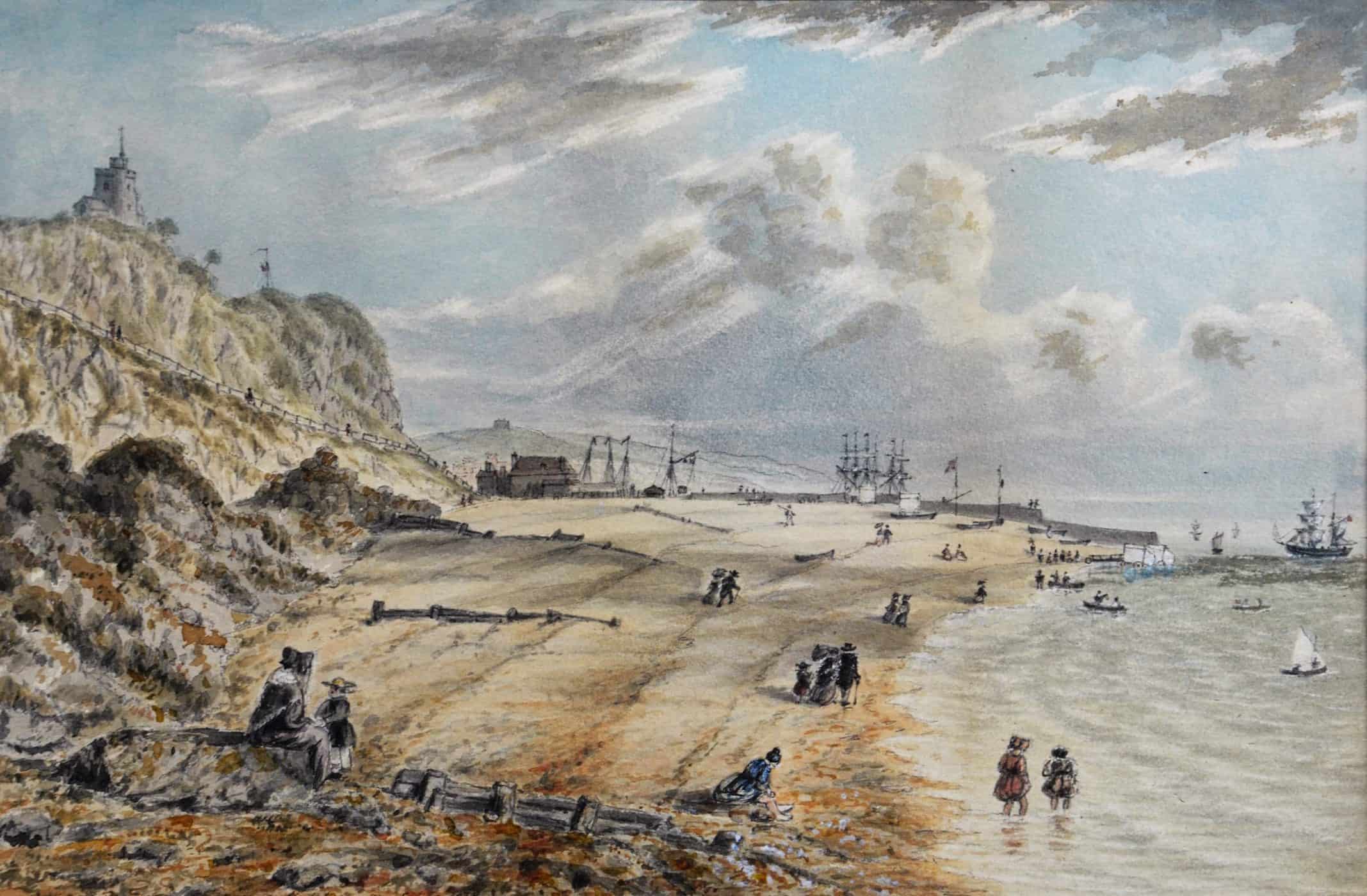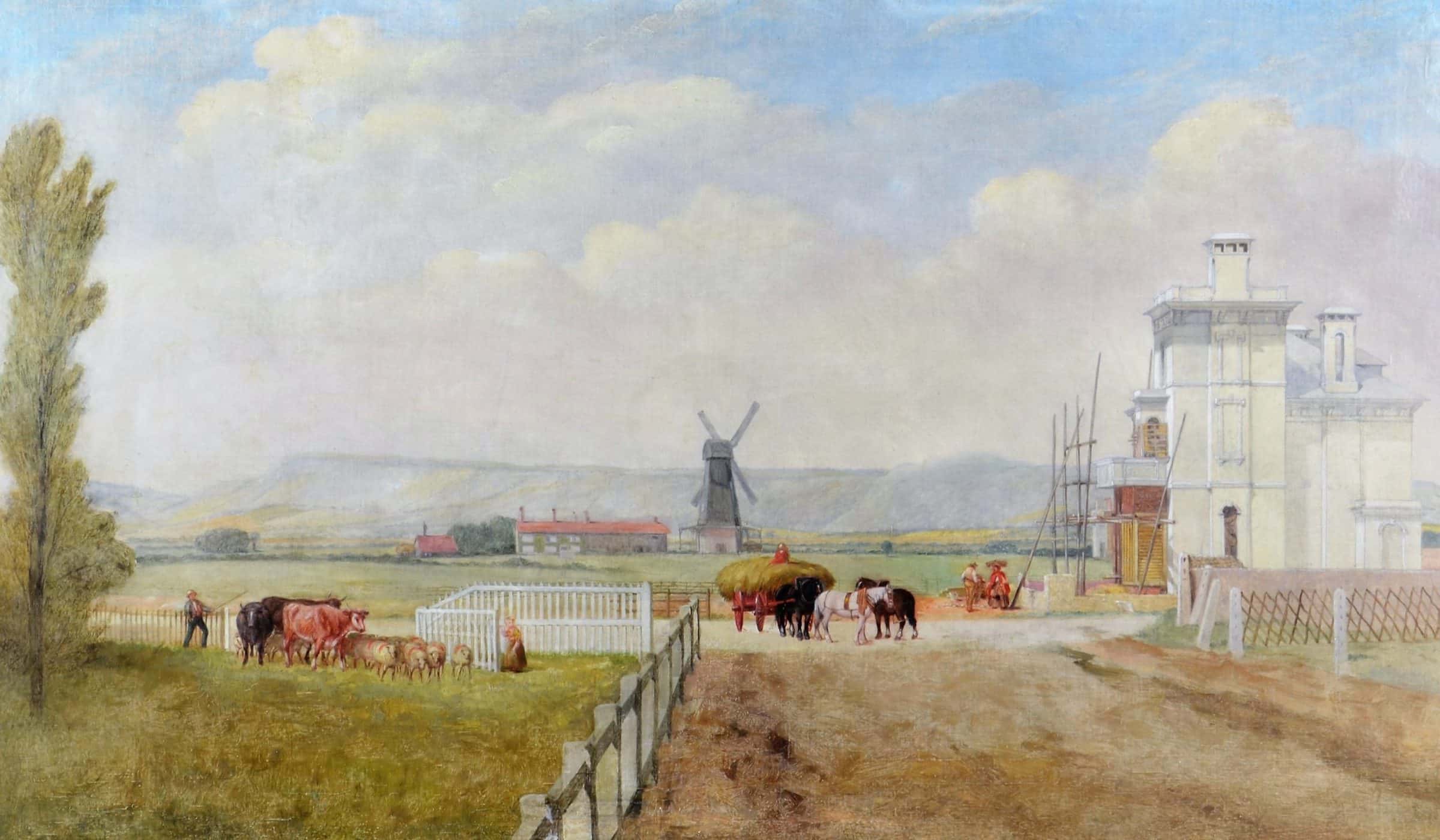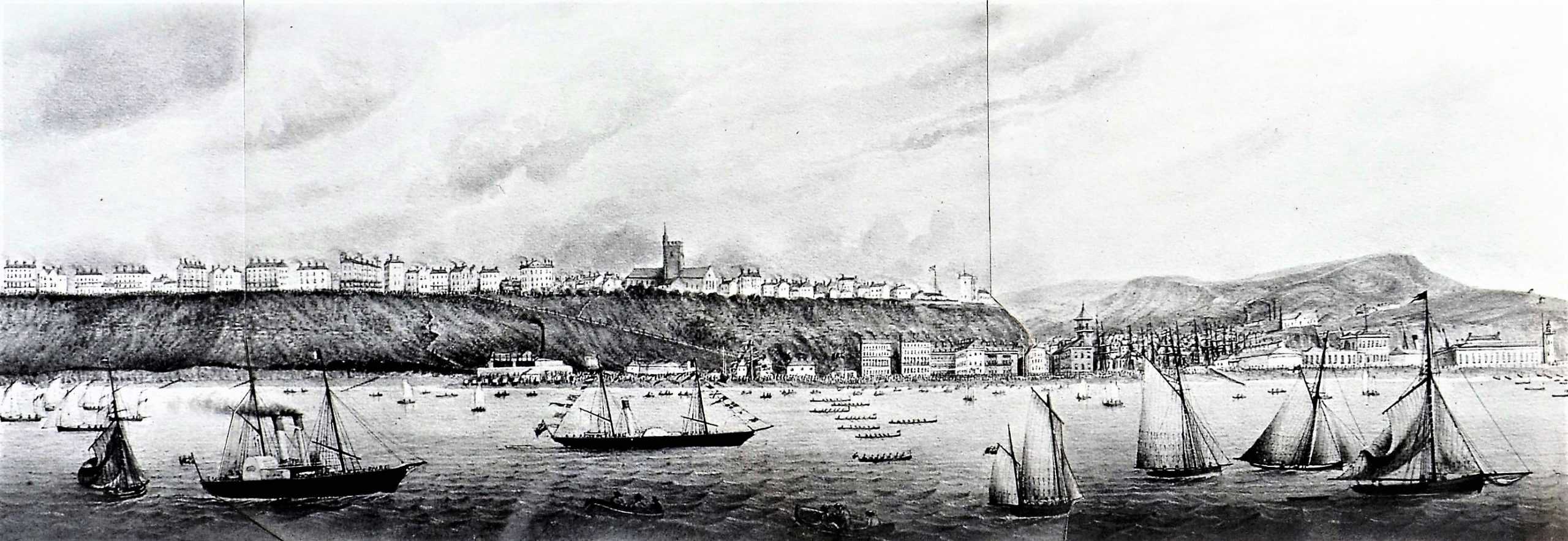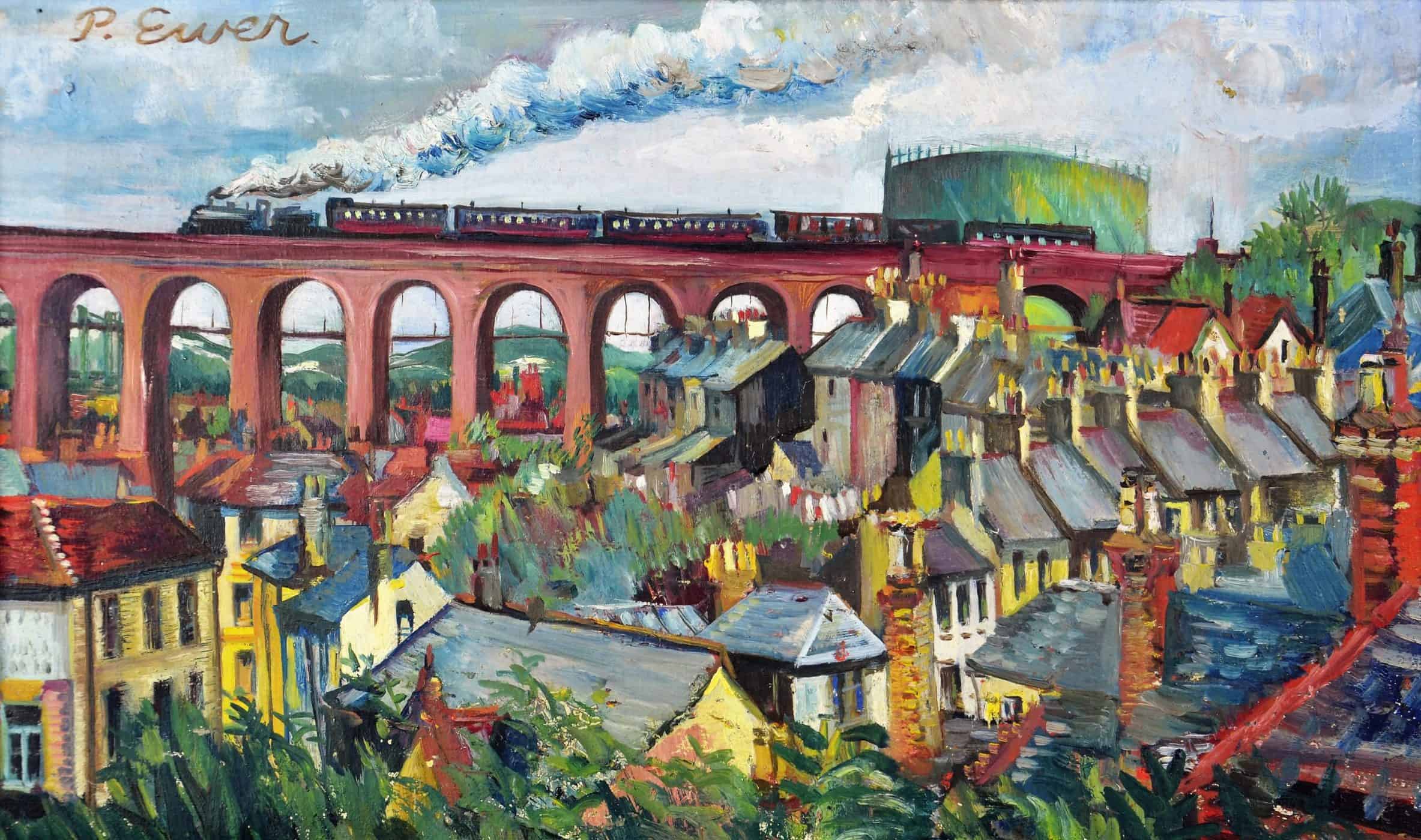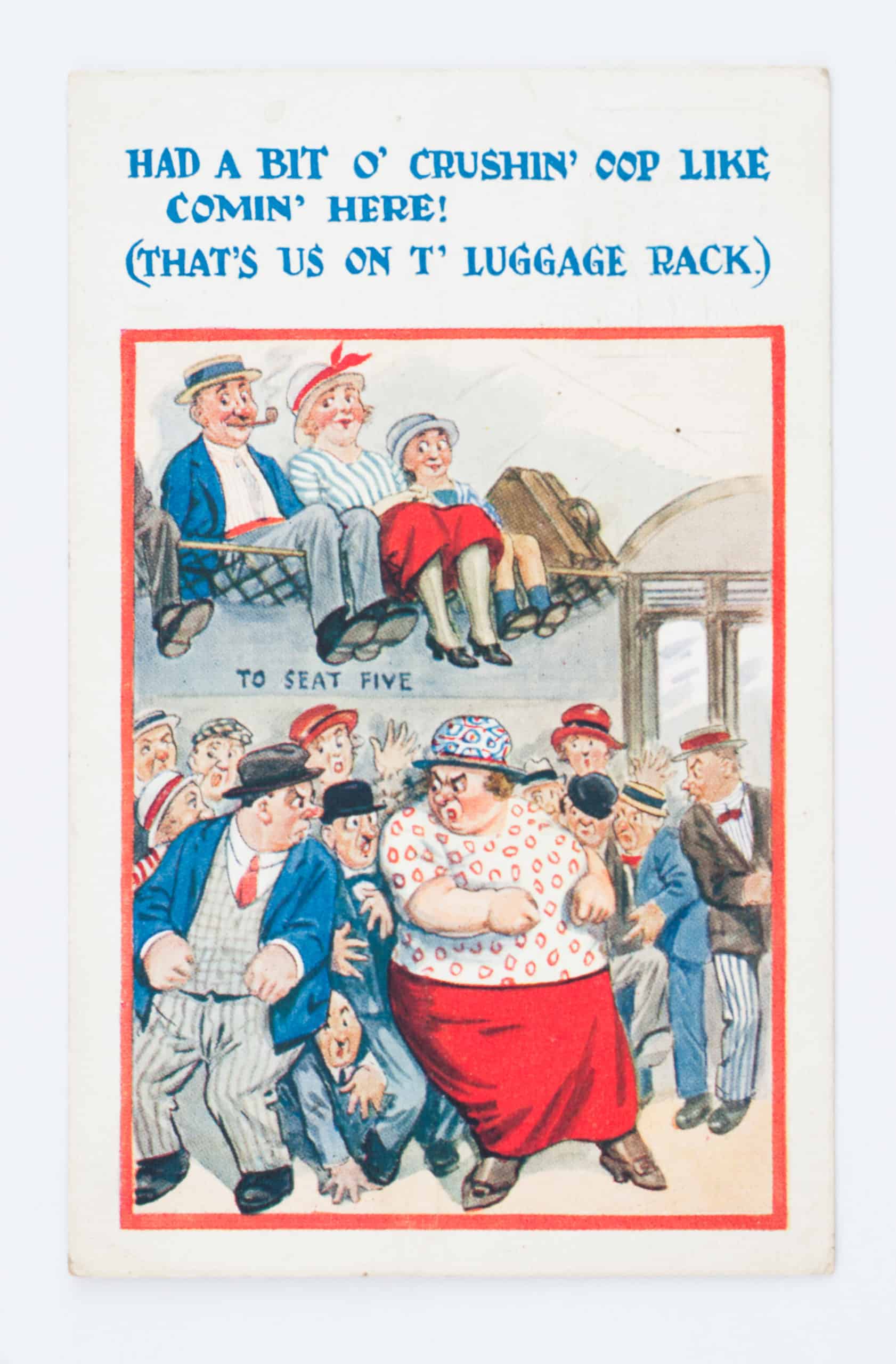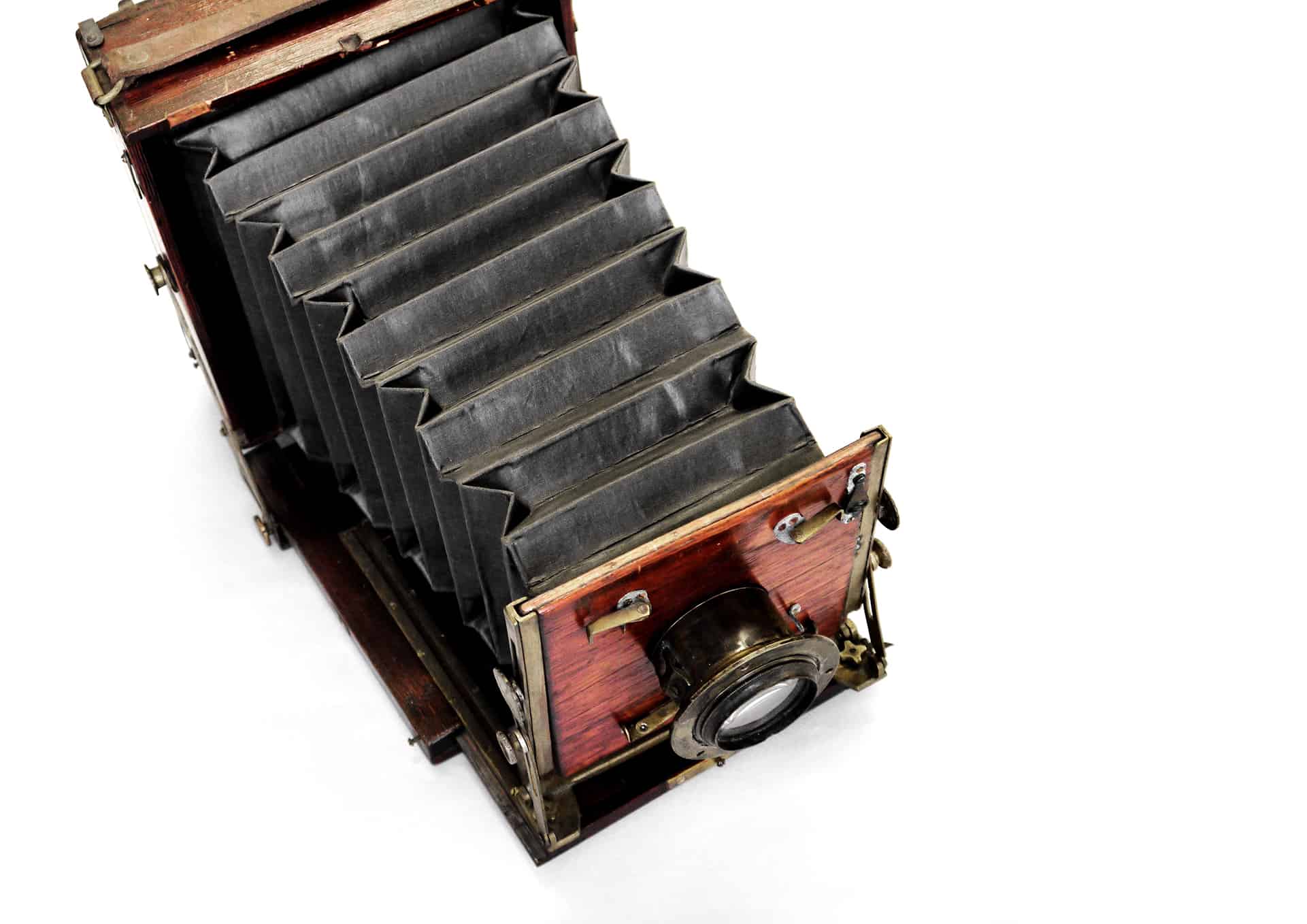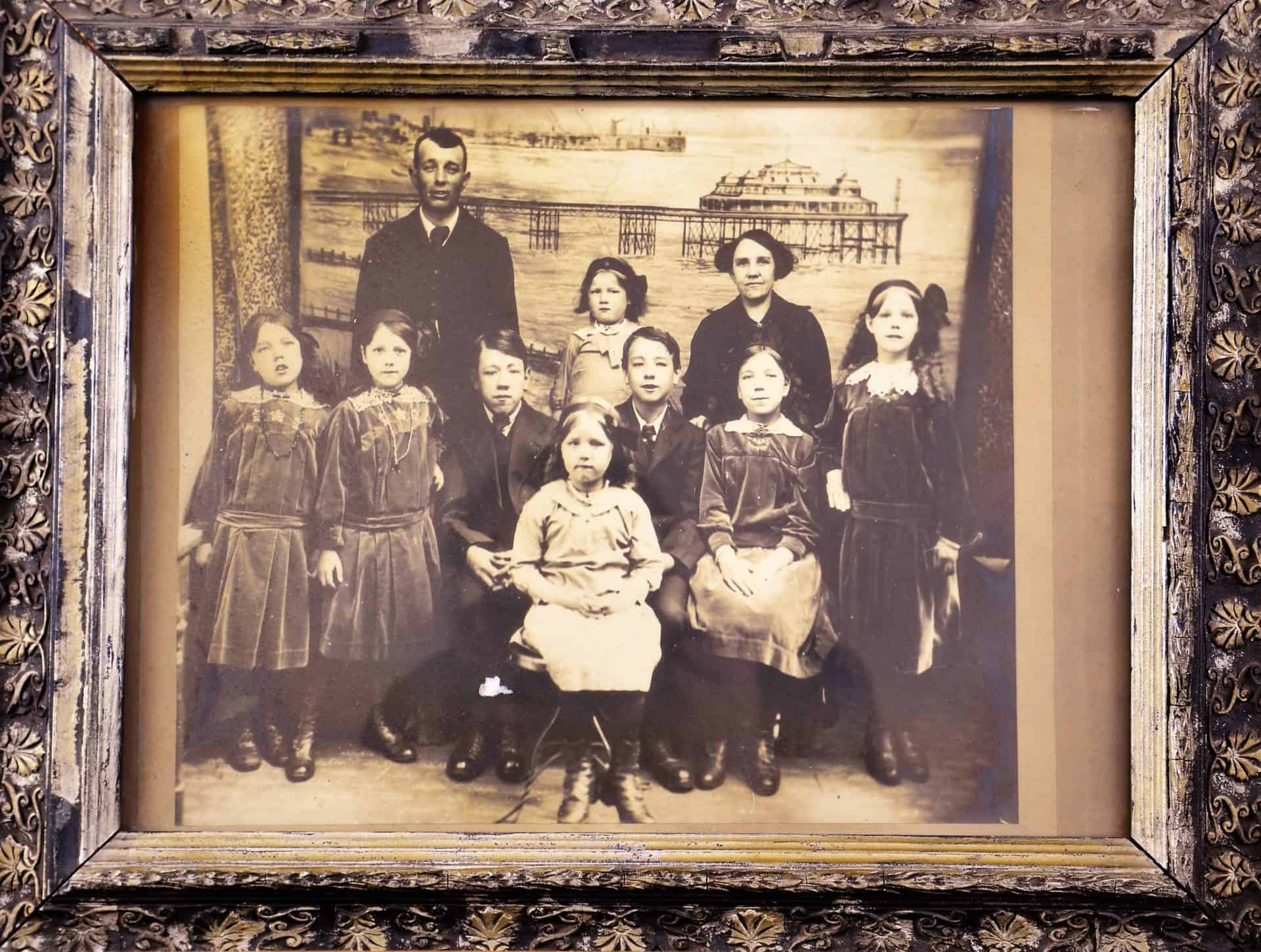Leas Shelter, Folkestone
In this oil painting by James Williamson we see the Leas Shelter, with its panoramic view of the Lower Leas, Folkestone beach, harbour and English Channel. Here many of Folkestone’s fashionable visitors gathered to enjoy the sunshine, conversation, a fine sea view and some light refreshment. Below was a steep drop down to the Lower Leas and the beach, reached by the Zig Zag path. The Victoria Pier can clearly be seen, with a cross-channel steamer just leaving Folkestone Harbour in the distance. Visitors are already on the beach, with some paddling or swimming in the sea. Several sailing fishing boats have just left harbour. Just visible, at the top of the beach, are the humpback curves of the Switchback Railway an early wooden rollercoaster, from which the shrieks of the people enjoying a ride could clearly be heard on the Leas above.
Object: Seaside holidays
Folkestone Chronicle newspaper
The Folkestone Chronicle and Visitors Guide to Folkestone, Sandgate and their Neighbourhood,1858. It provided Victorian tourists with much useful information about the town, its accommodation, amenities, transport links and attractions. Shops selling food and drink advertised in the paper, as did purveyors of health products, those selling the latest fashions and the owner of the town omnibus (horse-drawn bus). There is even an advert from a Mr Luckin, who is selling by auction the Royal Adelaide swimming baths at Deal and a number of bathing machines.
Photo album – Folkestone and Sandgate
The photo album of a wealthy (cuurently unknown) family from the 1890s. It includes pictures of their life in Fashionable Folkestone, local attractions and some dramatic events.
Postcard – Just dreaming about it At Folkestone
Seaside cartoon postcard. Caption reads: I’d be content to stay here for the rest of my natural, – just dreaming about it At Folkestone. Picture shows a middle age dozing man, smoking a pipe and enjoying a well-earned rest on the beach, from a life of hard work, with grey factory in background. In the 1920s, when this comic postcard was produced, most people worked very long hours, often in strenuous jobs. Some only had one week’s holiday a year. His red nose and face may be the result of sunburn, drinking too much beer, or both.
Watercolour – Panorama of Folkestone
Panorama of Folkestone from the sea. This late Victorian watercolour is full of detail, showing the railway line, the growing town, the harbour, a paddle steamer about to leave the harbour, rows of bathing machines and Arthur Fagg’s bathing carriages on four rails jutting out into the sea. Each carriage (two were for men and two for women) had 30 cabins which were hauled by 12 men working a windlass into the sea. At the end of each was a diving board and a cage for non-swimmers to keep them safe from drowning.
Photo of charabanc trip
Photograph of a charabanc trip. Four charabancs full of tourists are about to set off from Folkestone in the 1920s. Charabancs (pronounced charabangs) were early open top buses. These ones belonged to Folkestone Motors. Charabancs left Folkestone on day trips to local tourist destinations including Canterbury, Hythe, the Romney Marsh, Rye and the villages of the North Downs. The name charabanc derives from the French char à bancs or ‘carriage with wooden benches’, having originated as a horse-drawn vehicle in France in the early 19th century.
Handbill for excusion to Holland
This early 20th century handbill, produced by the Zeeland Steamship Company, is advertising excursions to Walcheren, Holland by steamship via the Folkestone Harbour to Flushing route. As well as the ferry ticket, passengers can book meals and hotel accommodation.
Ladies swimsuit, 1950s
This ladies bathing costume from the 1950s is knitted from coral-coloured wool and was the height of fashion at the time. Mens’ swimming trunks and children’s costumes were often made from wool too. They got very soggy when you went in the sea.
Victorian paperweight
This is a glass paperweight of Sandgate, a popular village for walks and excursions from Folkestone. It was bought as a Victorian seaside souvenir – a special present brought back from a holiday. The picture was printed in black and white and then coloured by hand. Sandgate became popular in the 1790s after the famous actress Mrs Siddons visited for the sea bathing.
Teapot souvenir
This pink and white china tea pot is part of a much larger set, including cups, saucers, plates, a milk jug and sugar bowl. The design is inspired by the shape and texture of a sea shell, with seahorses making up the handle, spout and top of on the lid. It is decorated with the coat of arms of Folkestone – a medieval sailing ship. Seaside china was very popular from late Victorian times until after the Second World War.
Oil painting – Bayle Steps
This oil painting from 1949 shows a boy and girl climbing the Bayle Steps from Folkestone Harbour. The boy is carrying a bucket and spade. Both have towels tucked under their arms. It looks like they’re heading home after a day on the beach. Perhaps they’re returning from Sunny Sands – the popular sandy beach to the east of the harbour?
Poster – Fashionable Folkestone, 1927
Folkestone, Southern Railway publicity poster. This colourful poster is advertising holidays in Folkestone. It was created by Leslie Carr for Southern Railway in 1927, when Folkestone was a fashionable holiday resort. It presents the town as a sunny, healthy and exciting place to visit. Visitors are having fun swimming in the sea, diving from a rowing boat, sunbathing on the beach, exploring the Lower Leas and enjoying entertainments at the Leas Cliff Hall.
Oil painting – Folkestone 1845
Folkestone 1845, shewing the relative positions of the present West Terrace, Sandgate Road, Bouverie Square, Mill Field etc. This oil painting by R J Lonsdale captures an important moment in the growth of Victorian Folkestone. Farmland on the edge of the town has been bought by developers and building work is well underway. Construction of a large property on the right is nearly finished. Other houses and streets will follow, as the town quickly expands to meet the needs of tourists and wealthy people who want to buy a property in Fashionable Folkestone.
Print – Folkestone Regatta panorama
Folkestone Regatta before 1869. This panoramic print shows an action-packed Folkestone Regatta in mid Victorian times. This was an exciting day of festivities linked to ships and the sea that took place each summer. It included yacht and rowing boat races, games, competitions and seaside entertainments, such as Punch and Judy. Thousands of people flocked to the town to enjoy a fun day out. In the evening, wealthy people enjoyed special theatre performances, dances or expensive dinners, while poorer people, including the Folkestone fishing community, celebrated in the many inns. Regatta day often ended with a spectacular fireworks display.
Oil painting – Foord Viaduct
In this colourful 1950s oil painting we can see a steam train passing over the Foord Viaduct in Folkestone. The arrival of the railway in 1843 stimulated the growth of Folkestone as a holiday resort, and for well over 100 years most visitors arrived by train. The Foord Viaduct completed in 1844, was designed by Victorian engineer Sir William Cubitt. At over 100 feet tall, it is the world’s highest arched brick viaduct.
Postcard – crowded train
This humorous 1920s postcard shows just how crowded trains to places like Folkestone could be at the height of the holiday season.
Oil painting – Victoria Pier
This is an oil painting of Folkestone’s Victoria Pier by the artist Paul Fordyce Maitland (1863-1909). The pier, which opened in 1888 was a popular seaside attraction, and a place to promenade and take the sea air. It was 683 feet long, and erected on elegant iron columns. It included a pavilion at the seaward end which could seat 800 and hosted a wide variety of entertainments, from music concerts and theatrical performances to Punch and Judy shows. On warm summer evenings concerts were sometimes performed outside, under the glow of fairy lights. It was also popular with local anglers. The first international beauty contest is believed to have taken place here in 1908. It also hosted a popular dog show in the 1920s. The pier was partly demolished to prevent invasion in 1940, suffered a serious fire in 1945 and was finally dismantled in 1954.
Photograph – the Dutton family, 1914
A framed photo of the Dutton family who came on holiday to Folkestone in the summer of 1914, just before the outbreak of the First World War.

